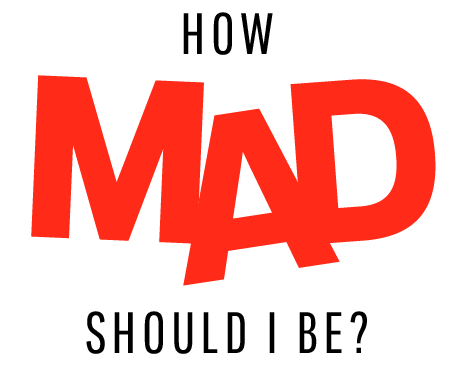
There’s so much to get mad about these days that it can be hard to know where to throw your outrage. On Twitter? To your senator? We’ve devised a handy rage calculator to help you determine the appropriate amount of outrage to express on social media.
It seems like each passing week in the conversation around Asian-American representation in media brings a fresh offense: The Great Wall, Iron Fist, the Broadway revival of Miss Saigon, and now Ghost in the Shell. The Hollywood remake of the beloved anime and manga has carried a stench of suspicion since the studio released the first image of Johannsson sporting Major Motoko Kusanagi’s classic black bob and dark pupils — a controversy that only mushroomed after news leaked that the studio had experimented with using CGI to make white faces to look more “Asian.” As is often the case with such controversies, it can be hard to separate the outcry from the material. So as is my masochistic duty as your outrage calculator, I watched Ghost in the Shell so you can choose not to. Let’s begin.
I’ve never seen the original. What’s the movie about?
Just like the manga and anime, Ghost in the Shell is set in a distant future where people routinely get cybernetic enhancements. Scarlett Johansson’s character, initially introduced as Major Mira Killian (how Irish), is a weapon made by a global cybernetics company called Hanka. She represents the apex of technological achievement: a human brain inside of a cyborg body. (Just in case you didn’t get it, there’s a lot of dialogue about how the “ghost” is her brain and the “shell” is her body.) At the outset, she’s there to track down a rogue robot named Kuze who is assassinating senior Hanka employees until she realizes that Kuze is right and that Hanka is an evil, shadowy conglomerate. Surprise!
Well, that sounds fine. Isn’t this just another typical Hollywood adaptation of an Asian movie?
Well, yes. In some ways, the logical route would have been to dispense with all the nods to Japanese culture whatsoever: Ghost in the Shell could have gone full Departed and made Mira Killian a poor Irish girl in dystopian Southie. Instead, there’s a big reveal halfway through the movie: The Major realizes that she isn’t Mira Killian, but a Japanese runaway named Motoko Kusanagi.
Wait, what?
Heh. So, just like The Bourne Identity, the entire emotional arc of the movie hinges on the idea of self-discovery and understanding your “true” past. It’s very American. Basically, Major learns that her backstory as a refugee who died in a terrorist attack was false, and that in reality she was a neo-Luddite who wrote anarchist manifestos with her lover Hideo. (If you think a movie about that sounds way more fun than the movie we got, you’re not alone.) Hanka killed them and harvested their brains for cybernetic experimentation. Moreover, Hideo is actually Kuze. (Despite having a very Japanese name, he too is played by a cyborg Michael Pitt.) And to pile onto all of this, the Major has a disorienting reunion with her biological mother Hairi, played by Japanese actress Kaori Momoi, who only speaks English to her. (Even though she has a Japanese brain, Motoko does not speak Japanese aloud, though she seems to understand it.) The penultimate scene of the film is Scarlett Johansson standing in front of a “Motoko Kusanagi” headstone as her Japanese mother looks on.
That is wild. So, is this whitewashing?
Well, it’s complicated. Like “mansplaining” and “gaslighting,” “whitewashing” has become one of those buzzwords whose meaning has shifted from its original specific definition; now it basically just means “Asian erasure.” But if we’re being strict about it, “whitewashing” is having a white actor actually play a character of Asian descent. So, Katharine Hepburn doing yellowface in Dragon Seed or more recently, Emma Stone as a mixed-race Asian-American in Aloha.
Anime emerged from the complicated history of postwar Japan, and its characters are often not racialized as Japanese. That’s true of the Major in the original anime, who has the same giant blue eyes Johansson sports in the role. Ghost in the Shell has a second loophole as well: While Motoko’s brain is Japanese, her cyborg body could be anything. That said, the Major doesn’t experience any cultural or racial identity crisis that might occur when you put a Japanese mind into a white person’s body, and no one ever remarks upon it. The movie assumes a post-racial world without doing any of the work to build it out.
Without splitting hairs about whether or not Johansson’s casting was truly “whitewashing,” the movie plays into a larger discussion about which bodies get to be fully human in mass media. The implication is that white bodies are “universal,” whereas bodies of color aren’t — a common problem in American narratives that speaks to a deeper crisis of empathy. Scarlett Johansson herself recently made this argument while promoting the film: “I think this character is living a very unique experience in that she has a human brain in an entirely machinate body. She’s essentially identity-less.”
That’s pretty tone-deaf!
Well, at least she’s not as bad as Matt Damon.
But I heard that this was a feminist film?
To the movie’s credit, it does very bluntly deal with consent and how men in power legislate the female body. But feminism has also been used as an awkward shield in response to questions about race, a tactic women of color know all too well.
How are Asian women represented in the movie?
The only major Asian female actor of note is Momoi, who fulfills the role of a dutiful, suffering mother. Other than that, Asian women exist in the background either as geisha robots, strippers, or street walkers.
Should I watch the original?
Yes. It has much more complex and sometimes opaque ideas about what constitutes subjectivity in a cybernetic organism. It’s tough and beautiful at the same time.
So, how mad should I be at Ghost in the Shell?
Don’t, like, sign some online petition, but you should feel free to enjoy yourself a good, old-fashioned tweet storm.


